“I am the Guardian”: Nepalese traditional handicrafts under conservation
Nepalese traditional handicrafts are treasures shaped by thousands of years of diverse civilizations at the foot of the Himalayas. From woodcarving and metal casting to Paubha painting, silk weaving, and stone carving, each craft has been passed down through generations of skilled artisans. These artisans carry the legacy of their culture with their hands, turning every piece into a time-traveling envoy that conveys the message that tradition remains timeless. In the hands of these guardians, these crafts shine with enduring brilliance.
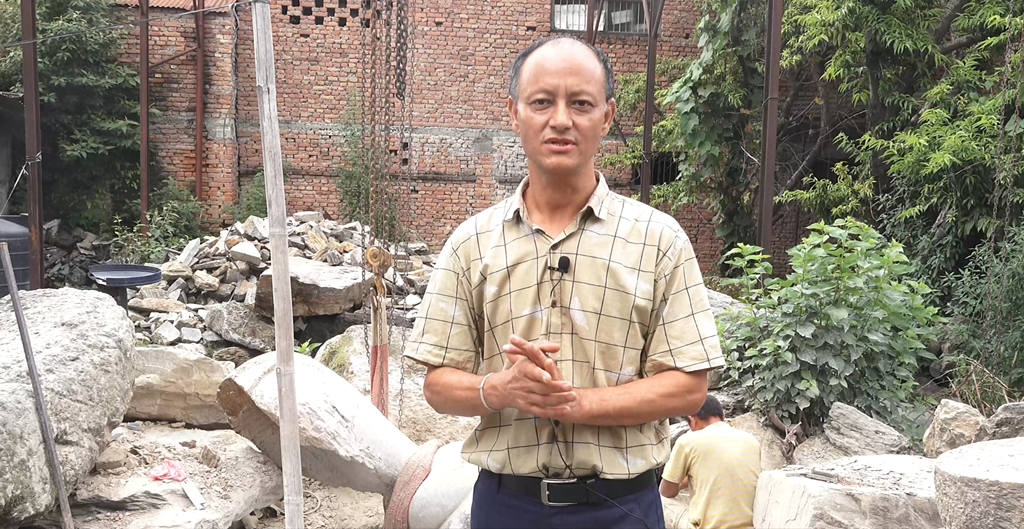
Revitalize traditional woodcarving with new brilliance
Ratna Muni Brahmacharya is the Chairman of Nepal Woodcraft Association and Proprietor of Ratna Wood Handicrafts. He said, “Woodcarving is an essential aspect of the Nepalese way of life. The tradition and evolution of woodcarving craftsmanship have endured for centuries, with roots that can be traced back thousands of years.”
The uniqueness of Nepalese woodcarving craftsmanship is primarily evident in the meticulous selection and processing of wood. High-quality timber sourced from the Terai in southern Nepal undergoes at least a year of natural sun-drying before being transformed into premium materials for woodcarving. This natural drying process preserves the wood’s original texture and strength, establishing a foundation for the exquisite durability of the finished carvings.
Dipak Raj Tuladhar, manager of the Proprietor of Amarapur Wood Carving, explained the woodcarving production process to us: “First, we create a design sketch on paper, then transfer the design onto the wood and carve various intricate shapes based on the drawing.”
Toran and Sha-Jhyal are distinctive woodcarving products from Nepal. Toran serves as a decorative architectural feature, commonly found at the entrances of temples, palaces, and significant buildings, symbolizing the warding off of evil and the welcoming of good fortune. Sha-Jhyal is a large traditional window adorned with Toran. The production process is intricate; even with the collaboration of five skilled craftsmen, it takes a year to complete a single window.
The statues of Buddha and deities play a vital role in the art of woodcarving. These figures not only illustrate the deep religious devotion of the Nepalese people but also showcase their dedication to artistic expression and beauty.
Confronted with the challenges of modern industry, Nepalese woodcarving craftsmanship faces the dilemma of preservation. Nonetheless, artisans like Ratna Muni Brahmacharya and Dipak Raj Tuladhar, along with other dedicated craftsmen, remain committed to safeguarding and passing down this traditional art form. They also share their knowledge and skills with the youth through training programs, allowing Nepalese woodcarving to shine with renewed brilliance in the contemporary era.
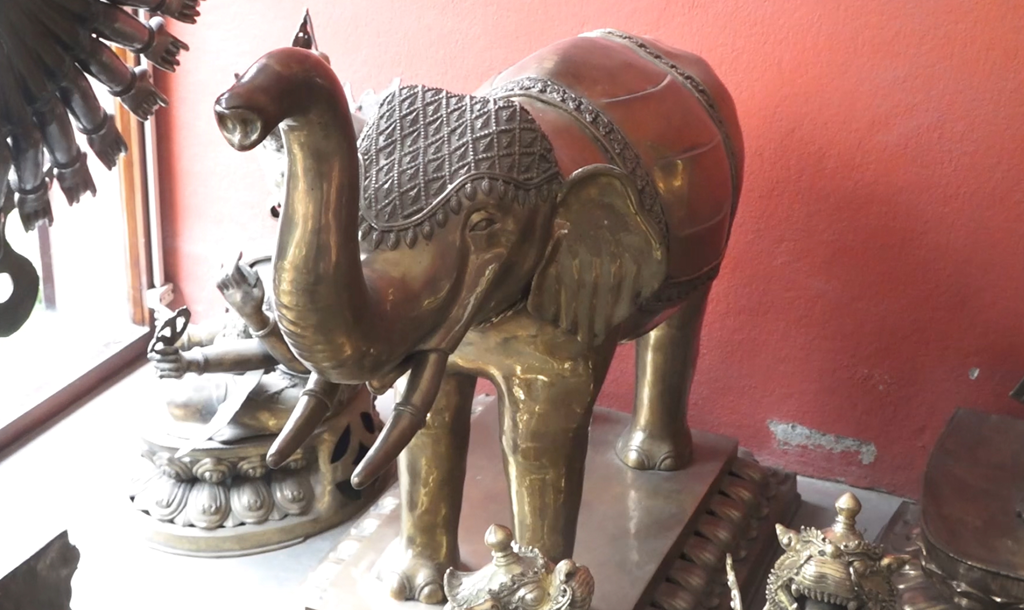
Craftsmanship creates exquisite legacies
In Nepal, metal handicrafts serve not only as daily necessities and decorations but also embody deep cultural significance and historical memories. From the solemn bronze bells found in temples to the metal sculptures that adorn the entrances of Nepalese homes, each piece represents the meticulous efforts and craftsmanship of its artisans. Even in the age of industrialization, there remains a dedicated group in Nepal committed to preserving the ancient art of metal casting, ensuring that this traditional craft continues to thrive.
“Our metal casting craftsmanship has a rich history that spans hundreds of years,” introduced Prajanya Ratna Shakya, Managing Director, Nepal Dhalout Udhyog, expressing his deep love and pride for this art form. In the factory, every step of the casting process adheres strictly to traditional methods. From the initial waxing to the final presentation of each piece, the work showcases the artisans’ unwavering commitment to detail and excellence.
The first step in the casting process is to create a wax mold. Artisans meticulously carve intricate patterns into the wax block, each of which carries auspicious meanings. Next, they cover the wax mold layer by layer with a mixture of fine soil. “The entire process must be repeated three times to ensure the quality of the final product,” Shakya explained. Once the wax mold is fully encased in soil, it is placed in the sun to dry naturally, as no modern equipment can be used to expedite this process.
After the molds have naturally dried, they are sent to the furnace. The high temperature causes the wax inside to melt and flow out, creating a cavity for pouring the molten metal. “The melted wax can be filtered, recycled, and reused,” Shakya explained. Meanwhile, on the other side of the factory, workers heat the metal until it reaches a liquid state and then slowly pour it into the mold’s cavity, allowing it to cool and solidify.
The following day, the cooled metal products are removed from the clay mold. Artisans then employ tools such as small hammers, chisels, and files for detailed finishing and intricate carving. Each step of this process challenges the artisans’ patience and skill, and the result of their dedication is a collection of exquisite handicrafts.
“This is our smallest bell, and this is the sound it produces,” Shakya said as he lightly tapped the small bell in his hand, allowing its clear and pleasant tones to resonate in the air. He further explained that the larger the bell, the louder and more far-reaching its sound becomes.
“We are also teaching others to preserve this valuable traditional craftsmanship,” Shakya said with hope. In this casting factory, it’s not just the older generation of artisans upholding the tradition; younger artisans are gradually becoming involved as well. They learn the craftsmanship from their predecessors and work together to protect this treasured cultural heritage.
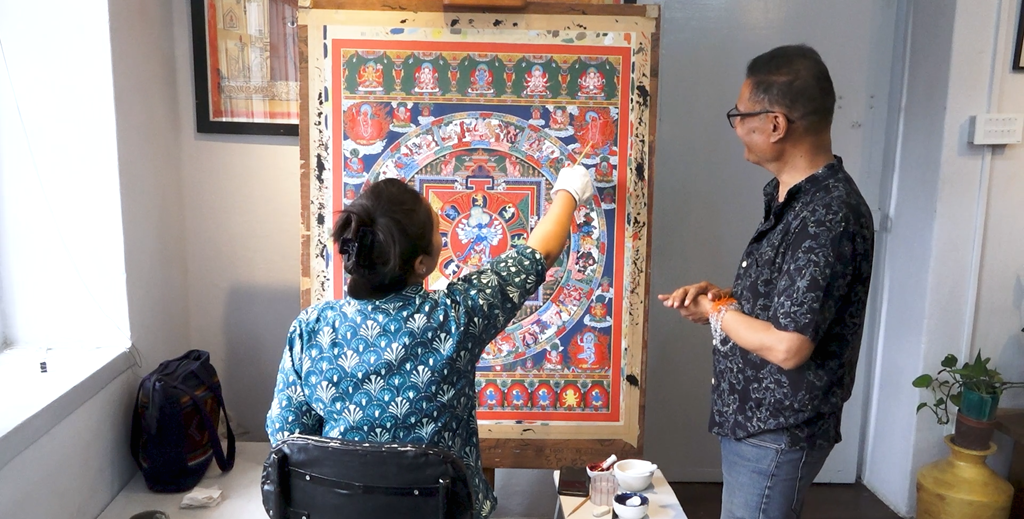
Guarding the art of Paubha painting
In the Kathmandu Valley of Nepal, there exists a unique and ancient art form known as Paubha painting. This artistic tradition captures the essence of religion, philosophy, and traditional culture, presenting them in an accessible manner through symbolic objects and imagery.
“Each Paubha painting reflects the artist’s in-depth research into Nepalese religion, philosophy, and traditional culture,” explained Lok Chitrakar, a senior Nepalese Paubha painting artist. This art form is not merely a simple imitation; it involves genuine creation. Due to its requirement for a profound understanding of diverse concepts, the creative process is a lengthy one.
Each color in Paubha painting has a distinct origin, with painters selecting natural minerals to create their pigments. “Blue comes from lapis lazuli, light green from malachite, red from cinnabar, and orpiment is the primary source of yellow,” Lok Chitrakar explained. These mineral pigments give Paubha paintings their vibrant, rich colors, imparting a natural texture to the artwork.
Today, painters are also innovating in pigment production by using dozens of herbs that are mixed and burned to create a unique black color for their paintings. The canvas production process is equally meticulous; artists utilize a special material known as “kamero” to craft the canvas. “The pigment binder is crucial as well. We call it ‘sares,’ which is made from buffalo hide and is excellent for fixing the color,” Lok Chitrakar noted.
Paubha painting is not only a treasured artistic heritage but also a pursuit of a deeper understanding. Lok Chitrakar shared that his artistic journey was shaped by his family environment, leading him to learn painting from a young age. “Artistic creation relies on the comprehensive application and profound understanding of various knowledge. I have discovered joy and meaning in this creative process,” he explained.
Since ancient times, Paubha painting has been handed down through a master-apprentice relationship and from father to son. This rich tradition has been preserved across generations, from predecessors to descendants and from teachers to students. Lok Chitrakar expressed his dedication as a guardian of this cultural heritage, committing himself to share his knowledge with his students. He hopes to inspire more people to participate in the preservation of this art form.
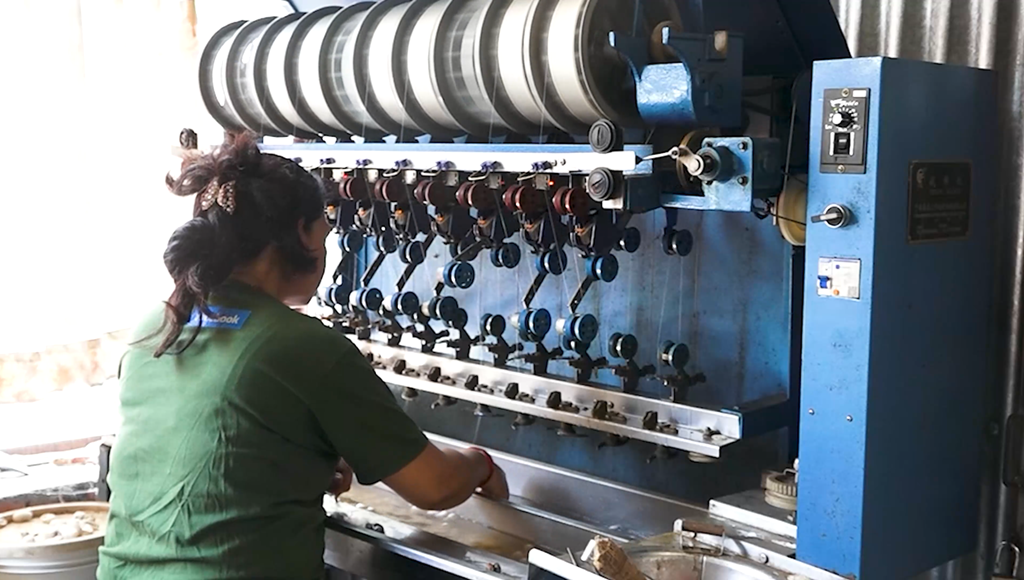
Dream chasers transforming cocoons into silk
In 2009, Gita Shrestha and Mohini Maharjan came together to establish Nepal Silk. They shared a vision to preserve traditional silk craftsmanship, create job opportunities for women, promote Nepalese silk, and revitalize this ancient art form.
Upon entering the workshop of Nepal Silk, you’ll find workers engaged in various stages of silk production, from picking silkworm cocoons to crafting yarn. Once the silkworm cocoons are acquired from local sericulturists and brought to the workshop, they undergo careful screening and classification. High-quality, flawless cocoons are selected for silk production. After selection, the workers boil the cocoons in hot water, allowing the sericin in the cocoon layer to swell and dissolve, which facilitates the extraction of strong silk filaments. These filaments are then combined to increase the strength and thickness of the silk thread. Following this, a machine is employed to spin the yarn, which is evenly wound onto a cylinder to take shape. Finally, the moist yarn is thoroughly dried in the sun, preparing it for storage, transportation, and weaving.
Gita Shrestha, one of the co-founders of Nepal Silk, explained, “Our spun threads come in a variety of types. Some are delicate and smooth, others are tough and strong, while some are soft and comfortable.”
The raw silk shawls are soft and drape beautifully, the printed shawls are vibrant and eye-catching, and the silk saris are stunning and elegant. “Our silk products reflect traditional Nepalese characteristics, are entirely handmade, and are highly sought after by international consumers, resulting in strong market demand,” Gita Shrestha said proudly.
Nepal Silk not only produces silk products but also creatively utilizes silk cocoons to make innovative items such as bath towels and earrings. Additionally, silk cocoon extracts are used to create soap, while tea is brewed from mulberry leaves, expanding the application of traditional Nepalese silk into various facets of daily life.
Currently, Nepal Silk has established direct and indirect supply relationships with approximately 100 farmers, creating job opportunities for the local community and enhancing the livelihoods of the villagers.
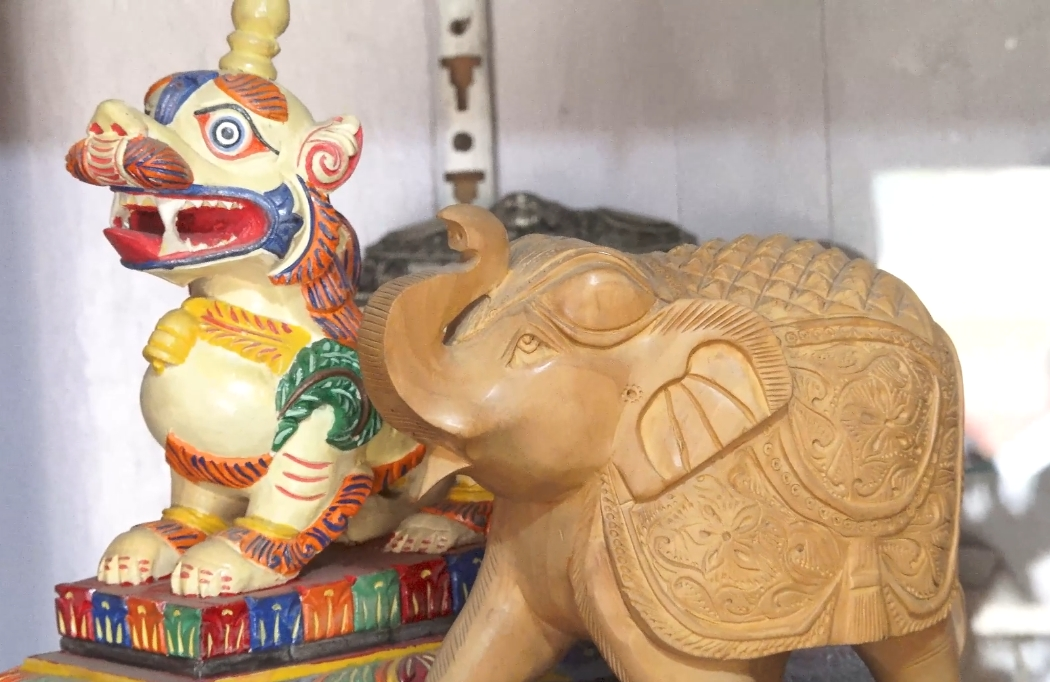
Art chiseled from stones
Dhrama Raj Shakya is a renowned Nepalese stone sculptor. With his exceptional skill and creativity, he transforms hard stones into lifelike deity statues and sculptures, providing audiences with both aesthetic pleasure and spiritual nourishment.
“Stone carving is a tradition passed down through generations in my family,” Dhrama said proudly. His father was a teacher at the Lalit Kala Campus of Tribhuvan University in Nepal, where Dhrama learned the art of stone carving under his father’s guidance from a young age.
Dhrama’s workshop is filled with stones of various shapes and sizes. He sources the raw stones from the mountainous region of Pharping, located near Kathmandu. Using a cutting machine, he first shapes the stones to the desired dimensions. Next, he sketches the general outline of the carving on the stone, carves out the intricate details by hand, and concludes the process with polishing and painting.
“Our primary work focuses on creating deity statues, drawing inspiration from the Licchavi Dynasty (around 400 AD - 750 AD) and the Malla Dynasty (1200 AD - 1768 AD) in Nepal,” Dhrama explained. The statues often depict the Hindu god Shiva and possess not only significant artistic value but also deep religious meaning. Additionally, Dhrama crafts stone lions, reliefs, and other decorative elements for temples, canals, and various everyday spaces. “Creating a stone carving requires immense patience and care,” Dhrama remarked. “From material selection to cutting, carving, and polishing, every step demands precision and attention. A purely handmade piece can take weeks or even months to complete.”
“The stone carvings I create are now found in many places across Nepal. My work has been highly recognized by government agencies and various organizations, earning me numerous honors. The recognition from the outside world provides me with a profound sense of achievement, and I take great joy in pursuing this craft,” Dhrama said. Looking ahead, he intends to continue honing his stone carving skills and preserving this invaluable cultural heritage.
Text by Wang Yunya and Guo Yao
Translated by YNTA